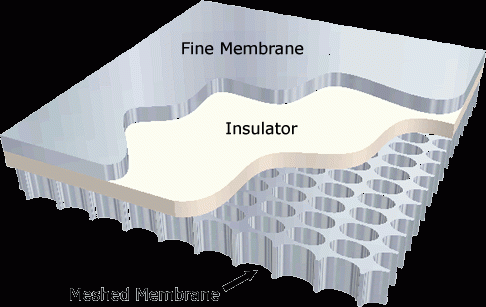FFL – Flat Flexible Loudspeakers
 Talking walls or other artificially made objects are no rarity in sci-fi and soon those will become our everyday reality. Warwick Audio is a UK based company which develops a new form of mid-range loudspeaker technology Flat Flexible Loudspeakers, FFL.
Talking walls or other artificially made objects are no rarity in sci-fi and soon those will become our everyday reality. Warwick Audio is a UK based company which develops a new form of mid-range loudspeaker technology Flat Flexible Loudspeakers, FFL.
The FFL was first developed by Dr Duncan Billson and Professor David Hutchins of the University of Warwick, with early trials using just two sheets of tin foil and an insulating layer of baking paper to produce sound. Since then its design has significantly evolved and the technology is now ready for commercial exploitation.
FFL products feature the combination of ultra-thin (0.2mm), lightweight and flexible materials used to produce directional high quality audio. The surface materials used in the construction process are printable and are cut to customized shapes where audio requirements allow. Ultra-thin and lightweight speakers lend themselves to easy and convenient mounting positions on walls and ceilings. The speakers are easy to be printed on and used as a wall poster.
Sound pressure levels of 80-105dB are achieved. Actual sound pressure level depends upon the area of the laminate selected. Laminates are offered in a variety of areas between the standard European paper sizes A5 through to A3. The speaker is voltage driven and draws very little power. Unlike the power hungry alternatives very little electrical current is wasted as heat.
The FFL sound is not distorted by magnetic fields, so you won’t suffer audio distortion from nearby equipment or from irritating mobile phone signals. The directionality of the sound produced by the FFL is controlled by flexing the laminate, allowing sound properties to be modified in a similar way to the image in a curved mirror.
FFL produces directional sound – sound waves that are directed to the audience. As a result the sound levels do not fall away rapidly as you stand further from the speaker, as with a conventional speaker.
Steve Couchman, CEO of Warwick Audio Technologies, is passionate about the technology and believes it could entirely replace the speakers currently used in homes and in cars, as well as in public address systems used in passenger terminals and shopping centres.
He says: “We believe this is a truly innovative technology. Its size and flexibility means it can be used in all sorts of areas where space is at a premium. Audiovisual companies are investigating its use as point of sale posters for smart audio messaging and car manufacturers are particularly interested in it for its lightweight and thinness, which means it can be incorporated into the headlining of cars, rather than lower down in the interior.”
Now it’s only a matter of time when companies start implementing this technology along their products.










Leave your response!